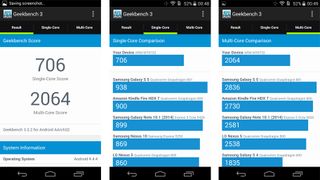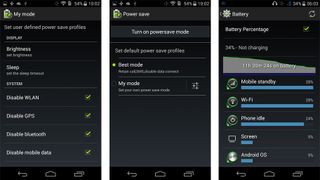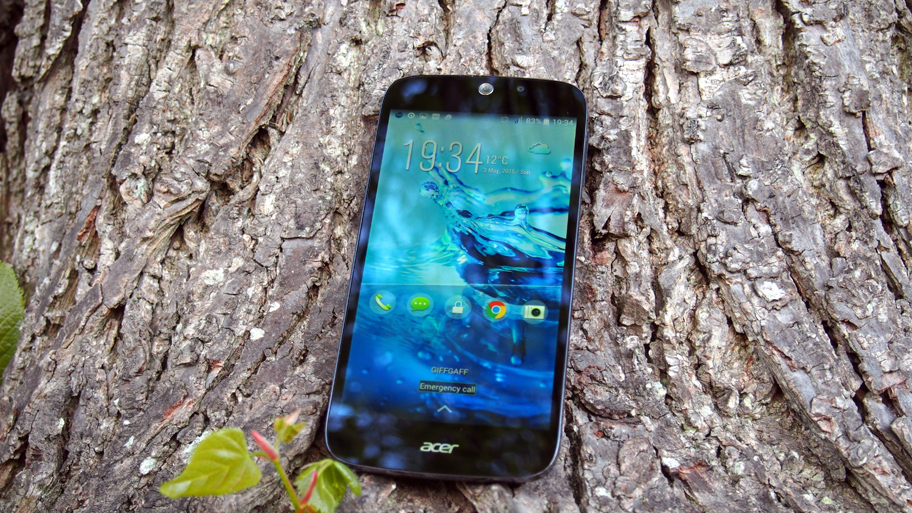Why you can trust TechRadar
Performance
To keep costs down, Acer has taken a route that many others before have travelled, often with mixed results. Instead of opting for Qualcomm chips, and without the option of in-house effort, as LG, Samsung and Huawei have managed, it has opted for a MediaTek chip.
Specifically, it is the quad-core MediaTek MT6732, clocked at 1.50 GHz, that keeps everything ticking over. And in general use, I found the Liquid Jade Z to be a mostly snappy performer, even with an anaemic 1GB of RAM.

In Geekbench, the Acer achieved a respectable single-core score of 706 and a multi-core score of 2064, making it a respectable performer for the price.
Whether zipping through menus, apps lists, different launchers or taking photos, the Liquid Jade Z barely complained, only occasionally throwing a minor tantrum. Mediatek has been slowly improving the quality of its chips compared to Qualcomm, becoming a little less obsessed with cores and more with performance, and this device is a key beneficiary.
This level of performance generally carried over into gaming. Titles such as Dead Trigger 2, Subway Surfers, the in-built Puzzle Pets and Crossy Road ran mostly without any difficulty, although there were a few dropped frames in more demanding titles. For the average mobile gamer, the Liquid Jade Z ought to suffice nicely, though more demanding users might be inclined to look at power-demons such as the Samsung Galaxy S6.

The screen remains responsive no matter what task is set upon it, keeping true to its general promise.
Battery life
With thinness come sacrifices, in this case, battery life. In their never-ending quest to make the first paper-thin device, mobile designers long ago hit the point when it was merely useless bloat that was lost, now other, important, things are being judged as ballast.
In the case of the Acer Liquid Jade Z, as with many flagships (here's looking at you iPhone 6) this has meant that previous mAh points have been shaved from the battery. Indeed, the phone sports a dinky 2,300 mAh battery pack.
Despite the loss in dimensions, the performance of the Liquid Jade Z in this regard is generally acceptable, but only just.
On standby, with WiFi activated, the device lost around 6% of battery over 12 hours, with emails and notifications buzzing away, which gives a decent overall first impression.

Upon watching video, playing games or browsing via mobile internet, however, things begin to change quickly. Percentage points occasionally dropped on a second by second basis. And with no option to remove the battery and replace it with another, or fast charge, the general experience becomes very reminiscent of 2012.
What I found to be particularly irritating, however, was how power-hungry the music player proved to be. Using my Nokia Lumia 930, I listen to around six or seven hours of music during a long working day, via wired headphones.
For every hour I listened on the Lumia 930, I generally lost about 3-4% of battery, maybe a little more if using Spotify. The Liquid Jade Z on the other hand guzzled around 15-18% per hour, leaving me with around 50% battery after three hours. In 2015, never mind 2012, this isn't very good performance.
However, to help matters somewhat, the built-in battery-saver app closes background applications and throttles processor performance, which isn't great but helps to eke out a little extra juice in tight situations.
In all, the Acer Liquid Jade Z cannot hold a candle to stellar battery performers, such as the Moto G 2013 and Moto E 2015, but different use cases will see varying levels of performance. Savvy users shouldn't have much of a problem, with expectations correctly set.
Current page: Performance and battery life
Prev Page Display and key features Next Page The essentials and cameraSean is a Scottish technology journalist who's written for the likes of T3, Trusted Reviews, TechAdvisor and Expert Reviews.

An obscure French startup just launched the cheapest true 5K monitor in the world right now and I can't wait to test it

‘Fact is more interesting than fiction’: what inspired Steven Knight to make the new Disney+ historical drama A Thousand Blows

US military and defense contractors hit with Infostealer malware
Most Popular



